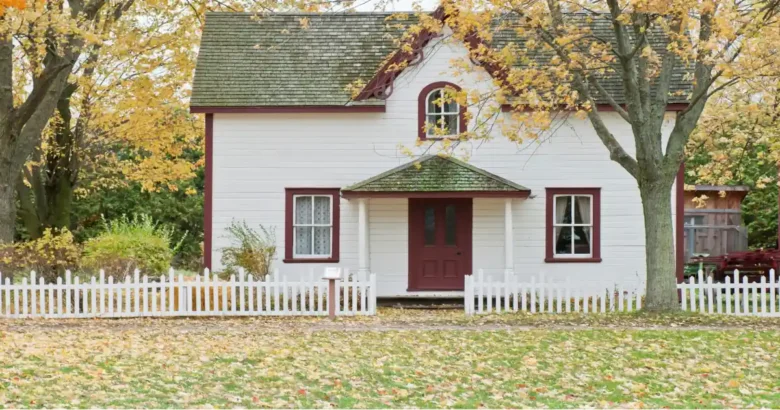Modern House Designs: Functional and Stylish Living Spaces
searching for ultra-modern house designs in Australia

When it comes to creating a home, the perfect blend of functionality and style is essential. Modern house designs offer just that—a harmonious balance that caters to today’s lifestyle while showcasing aesthetic appeal. Imagine spacious interiors flooded with natural light, multifunctional areas tailored for both work and play, and designs that adapt effortlessly to your needs. Whether you’re searching for ultra-modern house designs in Australia or unique plans tailored specifically for single-storey living, there’s an array of options available to transform your vision into reality. Embracing simplicity doesn’t mean compromising on beauty; rather, it’s about finding innovative ways to enhance everyday life through thoughtful design choices. Ready to explore how modern house designs can redefine your living space? Let’s dive into the world of stylish yet functional homes!
Modern House Designs offers balance of functionality and style
Modern house designs are all about getting that perfect mix between practicality and aesthetics. Gone are the days when homes were just useful boxes. Today’s architecture accepts creativity while ensuring usability. These designs favor open areas, allowing for a fluid movement throughout each room. The layout supports interaction and harmony among family members or guests, making every meeting feel effortless. Materials used in modern builds often reflect this ethos as well; sleek surfaces mixed with warm textures create an inviting environment without sacrificing elegance.
Storage solutions are cleverly integrated into the design, eliminating clutter while improving visual appeal. This thoughtful approach means living areas stay tidy yet stylish. With a focus on natural light through large windows and innovative layouts, modern houses not only look good but also uplift your general mood—making them ideal for contemporary living.
Benefits of Modern House Designs
Modern house designs offer an impressive blend of style and utility. They cater to modern lifestyles by maximizing space while promoting comfort. One noticeable benefit is energy efficiency. These homes often incorporate sustainable materials, advanced insulation techniques, and eco-friendly appliances that lower energy bills and reduce environmental impact. In addition, modern designs stress open floor plans. This layout supports a sense of flow between rooms, making spaces feel larger and more inviting.
Aesthetic appeal cannot be forgotten either. Sleek lines and minimalistic elements create stunning visuals that connect with many homeowners today. Furthermore, customization choices abound in modern architecture. From unique house plans in Australia to ultra-modern single-storey designs, there’s something for everyone to fit individual tastes. Smart home technology seamlessly integrates into these designs, improving convenience through automation for lighting, security systems, and climate control.
Key Features of Modern House Designs
Modern house designs are characterized by their clean lines and minimalist aesthetic. These homes prioritize simplicity, allowing for a seamless flow between spaces.
Open floor plans are a hallmark of modern design, encouraging interaction and movement throughout the living areas. This layout not only maximizes space but also enhances natural light.
Another key feature is the use of large windows. They invite sunlight while providing stunning views of the outdoors, creating an inviting atmosphere inside.
Sustainable materials play a significant role as well. Homeowners increasingly seek eco-friendly options that reduce their carbon footprint without sacrificing style or durability.
Moreover, smart home technology has become integral to modern designs. From automated lighting to advanced security systems, these features enhance both convenience and safety for residents.
Elements of Functional Living Spaces
Functional living spaces prioritize usability without sacrificing style. They incorporate layout strategies that enhance daily life.
Smart zoning is key. It allows for distinct areas dedicated to specific activities, from work to play. This separation promotes productivity and relaxation in the same environment.
Storage solutions are vital as well. Cleverly designed cabinets and multi-purpose furniture keep clutter at bay. A tidy space fosters a sense of calm and order.
Flexibility plays a significant role too. Modular furniture can easily adapt to changing needs, allowing rooms to evolve with your lifestyle.
Natural flow between spaces enhances accessibility and ease of movement, creating an inviting atmosphere throughout the home.
Thoughtful lighting choices contribute significantly to functionality while adding warmth and character to each area.
Incorporating Stylish Elements into Modern House Designs
Aesthetic appeal cannot be forgotten either. Sleek lines and minimalistic elements create stunning visuals that connect with many homeowners today. Furthermore, customization choices abound in modern architecture. From unique house plans in Australia to ultra-modern single-storey designs, there’s something for everyone to fit individual tastes. Smart home technology seamlessly integrates into these designs, improving convenience through automation for lighting, security systems, and climate control.
Don’t shy away from integrating natural elements too, such as indoor plants or wooden features, which add warmth and tranquility to sleek designs. This blend strikes a harmonious balance between contemporary flair and organic charm, making every corner feel thoughtfully curated.
Popular Modern House Design Styles
The design of contemporary homes reflects the diversity of its occupants. Each style accommodates various interests and lifestyles by reflecting a distinctive fusion of practicality and aesthetics. Clean lines and wide spaces are hallmarks of the minimalist style, which stresses simplicity. Its minimalist appearance produces a light-filled space that is welcoming and roomy. Conversely, mid-century modern blends modern flair with vintage charm. Bold colors and natural materials are frequently included in this design, which is defined by organic forms and interaction with nature. Loft-style designs use raw finishes like exposed brick or metal beams for individuals who enjoy an industrial feel. This urban style creates a stylish yet gritty ambiance.
The Scandinavian approach, on the other hand, uses neutral colors and wood textures to convey warmth. It strikes the ideal mix for practical living areas by emphasizing comfort while preserving a sleek appearance. These designs ensure comfort in the fast-paced world of architecture today while reflecting individual tastes.
Core Design Philosophy
Modern home designs are based on a fundamental philosophy that prioritizes practicality and simplicity. Every component is deliberate, putting function ahead of superfluous decoration. This strategy promotes open areas that help residents connect with one another. It blurs the boundaries between indoor and outdoor living by inviting natural light. Creativity in décor is possible with a minimalist style without overpowering the senses. Quality craftsmanship and materials take precedence over flimsy trends.
Another important component of this design philosophy is sustainability. A harmonious relationship with environment is promoted by the seamless integration of eco-friendly methods into architecture. This idea is further strengthened by embracing technology, which adds ease without sacrificing style. Every design choice demonstrates a dedication to producing spaces that effortlessly and elegantly accommodate contemporary lifestyles.
Key Architectural Elements
Modern home designs are characterized by key architectural components. Together, these elements produce a pleasing harmony between practicality and beauty. Ultra-modern home designs must have clean lines. They help create a clean, clutter-free look that complements modern living. Open floor plans improve spatial movement by letting air and light flow freely throughout the house. This design decision preserves distinct functionalities while promoting connectedness across spaces.
Integrating indoor and outdoor spaces is another essential component. Expansive windows or large sliding doors blur borders, bringing nature into for a fully immersive experience. Additionally important are sustainable materials, which demonstrate a dedication to eco-friendly living without sacrificing design. Reclaimed wood and recycled metals are examples of elements that assist environmental goals while adding distinctive textures. Together, these elements produce not only buildings but also areas that uplift and inspire daily living.
Large Windows and Natural Light
Modern home designs are characterized by large windows that let in an abundance of natural light. In addition to making areas brighter, this design decision fosters a welcoming environment. The integration of large glass panels improves the transition between indoor and outdoor spaces. All day long, homeowners can take in the beautiful scenery and the sun. A better living environment is facilitated by natural light. It lessens the need for artificial illumination, which elevates mood and fosters wellbeing.
Furthermore, energy-efficient glass solutions are frequently found in large windows, which contribute to the maintenance of acceptable interior temperatures. These improvements uphold sustainability initiatives without sacrificing design or aesthetics. When you include nature into your interior design, you can create vibrant, lively places that are captivating. This component changes the way we use our homes on a regular basis, from spacious living rooms to comfortable bedrooms.
Multifunctional Spaces
The core of contemporary home designs are multipurpose areas. They maximize functionality without sacrificing aesthetics by skillfully combining multiple functions into a single space. Consider a living room that can be quickly converted into an entertainment area or a home office. The changing lifestyles of today are accommodated by this adaptability. Modifiable barriers or astute furniture selections can completely change the way we engage with our surroundings. The area is made available for family activities by a foldable desk that is hidden when not in use.
These designs promote flexibility and originality, enabling homeowners to alter spaces to suit their requirements. Accepting multifunctionality entails accepting change, which is an essential component of modern life. Open-plan kitchens and eating areas, for example, encourage interaction while maintaining a focus on functionality. Every square meter is maximized for comfort and style with creative layouts, resulting in distinctive house plans across Australia that represent both individuality and functionality.
Material Selections
When designing a modern home, the selection of materials is essential. They enhance endurance and functionality in addition to appearance. Because of their classic charm, natural materials like metal, stone, and wood are widely used. These components add coziness without sacrificing style. As homeowners look for environmentally responsible alternatives, sustainable options are becoming more and more popular. Recycled steel or bamboo flooring can improve both aesthetics and environmental consciousness.
Textures are also quite important. The design gains depth by combining rough and smooth surfaces. Furthermore, color choices have the power to change the atmosphere of any room. Bold accents frequently look great against neutral color schemes. Your home’s maintenance levels are also impacted by the materials you choose. Low-maintenance options free you from worrying about maintenance so you can spend more time enjoying your fashionable living areas.
Smart Home Integration
The way we interact with our living areas has been completely transformed by smart home integration. Imagine using voice commands or a single device to operate your security system, lighting, and temperature. This degree of ease encourages energy efficiency in addition to improving comfort. Technology is effortlessly integrated into the architecture of contemporary home designs. Automated blinds improve privacy and temperature management throughout the day, and smart sensors can change lighting according to natural light levels.
Furthermore, peace of mind is offered by sophisticated security systems. Homeowners may keep an eye on their properties from a distance, guaranteeing constant safety. By automating routine tasks, these features accommodate hectic lifestyles. Incorporating smart technology into distinctive house plans is becoming more and more common in Australia as more people use it. The demand for attractive and functional homes that meet modern needs is reflected in this trend.
Sustainability Features
Modern home designs must incorporate sustainability elements to create a more environmentally friendly future. They prioritize improving livability while reducing their negative effects on the environment. In Australia, solar panels are now a common feature of ultra-modern home designs. By utilizing renewable energy, these systems lessen reliance on conventional power sources. Rainwater collecting devices gather and repurpose water for domestic purposes or irrigation. This is a desirable choice for environmentally aware homes since it not only saves resources but also cuts utility expenses.
Additionally, energy-efficient appliances are essential. These improvements, which include LED lights and smart thermostats, reduce usage without compromising comfort or design. Another important component of contemporary design is the use of sustainable materials. In addition to adding character, reclaimed wood and repurposed metals make building less wasteful. Green roof integration can improve insulation even further and encourage biodiversity, resulting in lively living areas that are advantageous to both the environment and inhabitants.
Design Considerations by Room
Every room in a modern home should be carefully considered when creating it. The center of the house is frequently the kitchen. Open floor plans and clever storage options improve both usability and appearance. Think about having furniture in the living area that may be used for a variety of purposes. Foldable tables or modular couches can change your room to suit your needs. Bedrooms should maximize storage and encourage rest. Making use of built-in wardrobes helps to keep clutter at bay and creates a calm environment.
Modern accents can also be added to bathrooms. Natural materials and sleek fixtures provide a spa-like atmosphere at home. You should not ignore outdoor spaces. Any modern home design may be made more livable by incorporating smooth transitions with huge sliding doors, which create an attractive connection between interior and outdoor spaces.
Modern House Design Trends
Trends in modern home design are always changing due to shifts in lifestyle and advances in technology. The use of sustainable materials is one prominent trend. Eco-friendly solutions that lower their carbon impact and increase aesthetic value are now given priority by homeowners. Minimalism, which is defined by simple lines and uncluttered areas, is another new popularity. By embracing functionality and simplicity, this method enables homeowners to create spaces that promote calm.
In contemporary homes, smart technology has also advanced significantly. These advances, which range from smart security systems to automatic lighting, improve convenience and safety without compromising style. The scene is still dominated by open floor plans. They maximize space economy and foster social interaction by facilitating smooth transitions between living areas. Biophilic designs, which bring nature within with lots of greenery or organic features, are also becoming more and more popular. By fostering a relationship with nature, this not only improves aesthetics but also fosters mental health.
Conclusion
Our perceptions of living areas are changing as a result of modern home designs. They create homes that satisfy our changing demands by fusing design and utility. Large windows and multipurpose spaces are examples of features that improve light flow and usage. This method reduces clutter and increases comfort. Today’s designs appeal to homeowners who care about the environment by emphasizing eco-friendly materials and intelligent technologies. Australia’s tendency toward distinctive home designs reflects a desire for uniqueness without compromising functionality.
Think about how each component fits into your lifestyle as you experiment with different designs, ranging from sleek, modern single-story possibilities to straightforward yet sophisticated layouts. What makes life joyful and who you are should be reflected in your house. Your place is uniquely yours, shaped by every decision you make. Take advantage of the opportunities presented by contemporary design as you construct a space that is uniquely yours.
Frequently Asked Questions
Modern house designs blend functionality with style, creating spaces that resonate with today’s lifestyle. As homeowners seek to express their individuality while maximizing efficiency, understanding common queries can help clarify what modern living entails.
What are the key benefits of modern house designs?
Modern house designs prioritize open spaces and natural light, often resulting in healthier environments. They offer flexibility for different lifestyles and needs. A well-thought-out design enhances comfort without sacrificing aesthetics.
How do I choose a unique house plan in Australia?
When looking for unique house plans in Australia, consider your personal preferences and local climate. Many architects provide custom options tailored to individual tastes while ensuring adherence to regulations.
Are single-storey modern houses practical?
Yes! Single-storey modern homes simplify accessibility and maintenance while maintaining stylish appeal. They’re ideal for families or individuals who prefer convenience over multiple levels.
What is an ultra-modern home design?
Ultra-modern home designs focus on minimalism combined with cutting-edge technology. These homes often feature sleek lines, large windows, and innovative materials that enhance both form and function.
Can sustainability be integrated into modern designs?
Absolutely! Sustainable features are increasingly becoming standard in new builds. Options like solar panels, rainwater harvesting systems, and energy-efficient appliances not only reduce environmental impact but also lower utility costs long-term.
What trends should I look out for in 2024 regarding modern architecture?
Expect more emphasis on green building practices alongside multifunctional spaces as people embrace remote work culture. Additionally, smart technology will play a significant role in future home innovations.
With these insights into frequently asked questions about contemporary housing solutions, navigating the world of modern house designs becomes much easier. Whether you’re exploring simple concepts or seeking the best architectural expression of your lifestyle choices, there’s something appealing about making intelligent decisions that cater directly to your needs.





